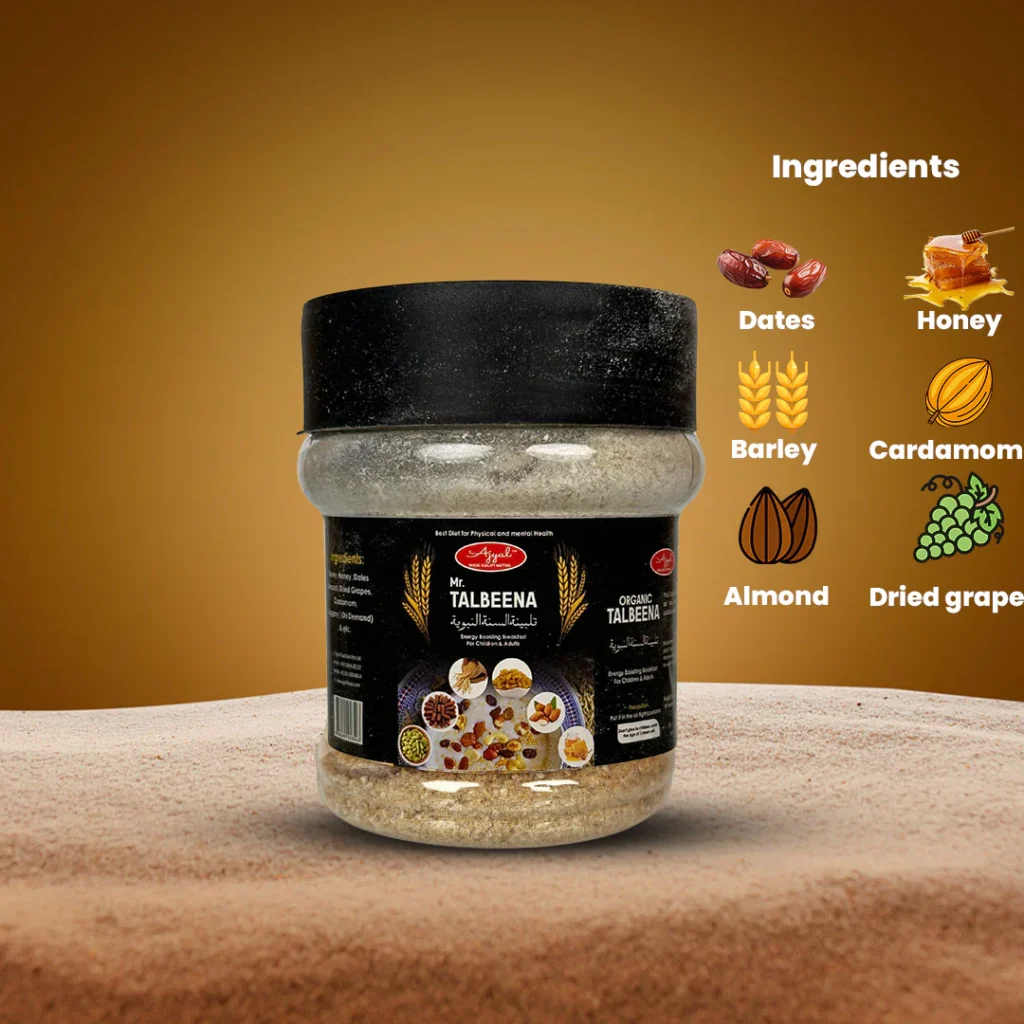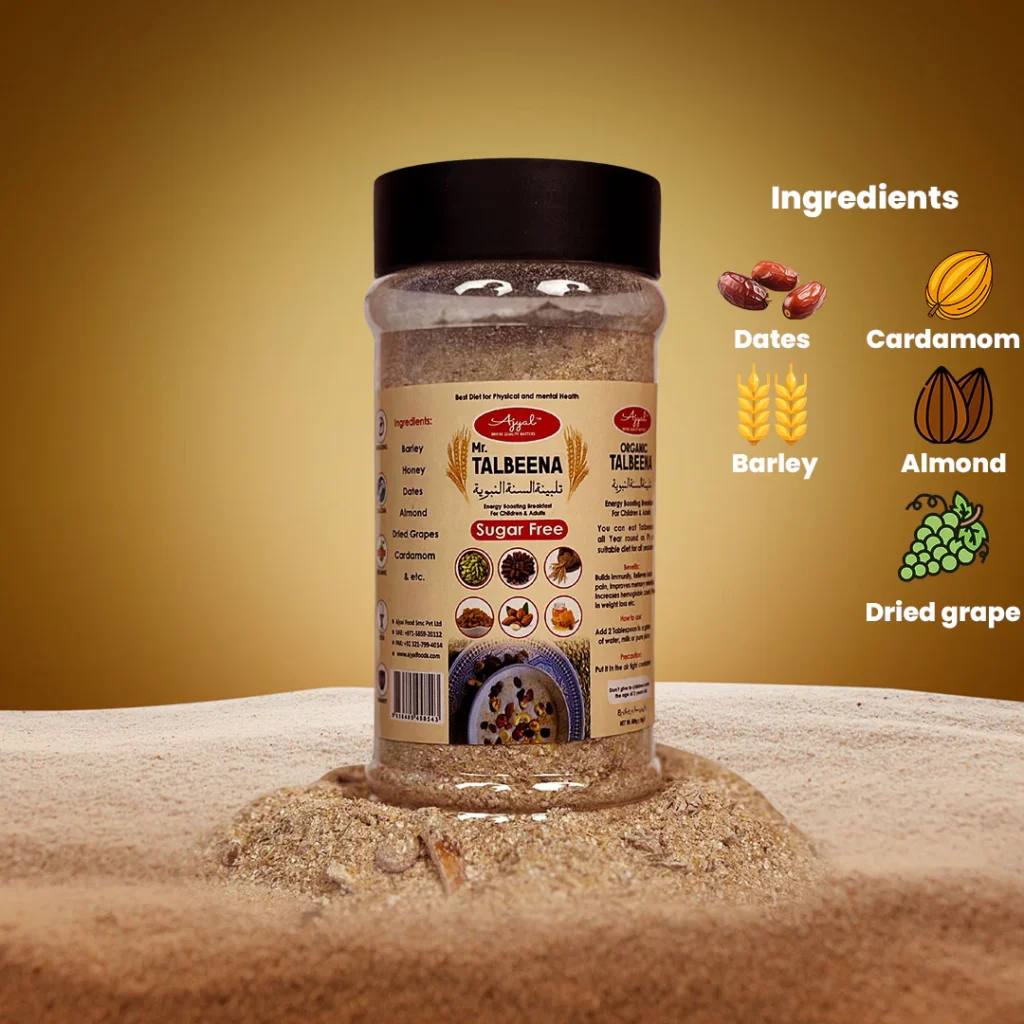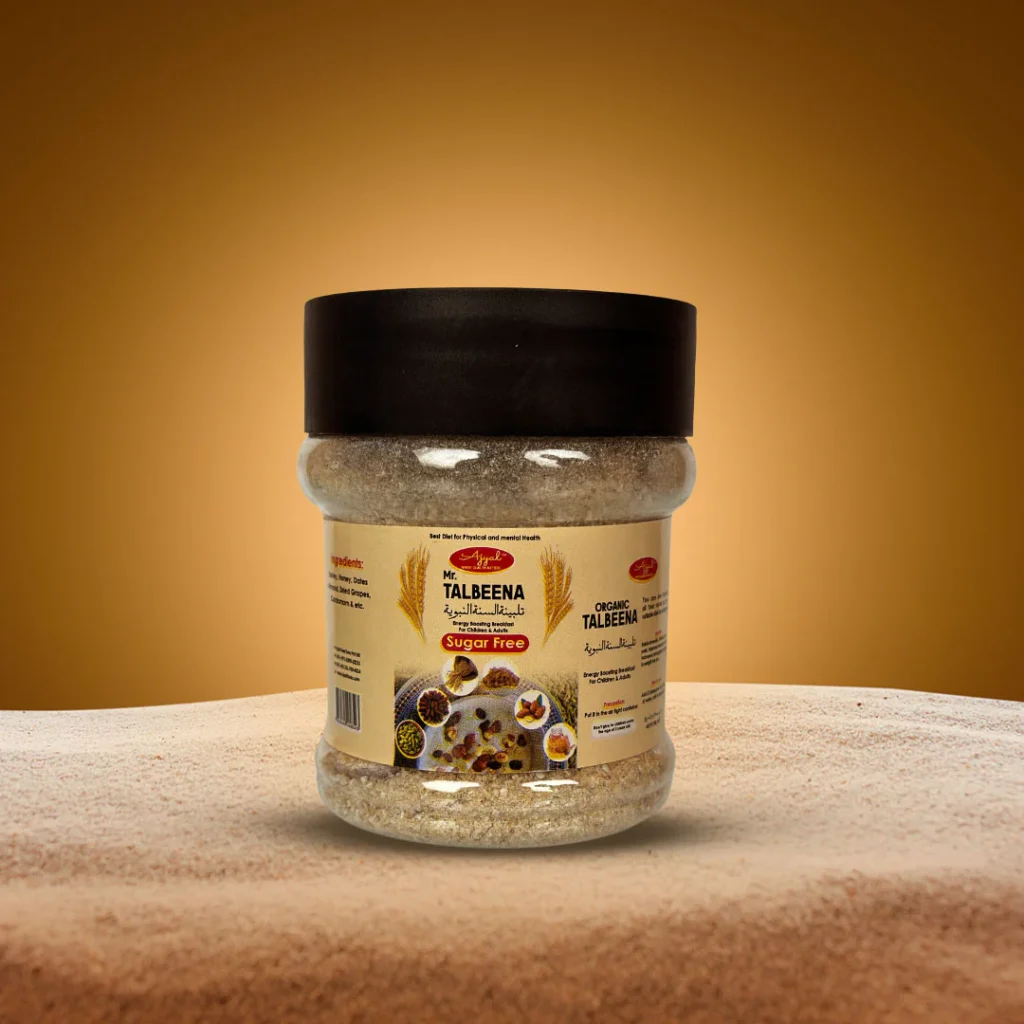What is Talbeena
Talbeena, sometimes spelled as Talbina, is a traditional dish made primarily from barley flour. It has been cherished for centuries, particularly in Middle Eastern cultures, and is often recognized for its numerous health benefits. The preparation of talbeena involves cooking barley flour with water or milk, creating a creamy and comforting dish that can be flavored with various ingredients.
Historical Background of Talbeena

Cultural Significance
Talbeena holds a special place in Islamic tradition. It is mentioned in various Hadiths, emphasizing its nutritional benefits and comforting properties. The Prophet Muhammad (peace be upon him) recommended talbeena as a nourishing food, especially during times of illness or grief. This cultural significance underscores not only its health benefits but also its role in providing comfort and care during difficult times.
Nutritional Profile of Talbeena

Key Nutrients
Talbeena is rich in essential nutrients, making it a valuable addition to any diet. Here are some key components:
- Complex Carbohydrates: Barley is a great source of complex carbohydrates, providing sustained energy and helping to maintain stable blood sugar levels.
- Dietary Fiber: High in fiber, talbeena supports digestive health by promoting regular bowel movements and enhancing gut flora.
- Vitamins and Minerals: Talbeena is abundant in B vitamins, iron, magnesium, and zinc, all of which play crucial roles in various bodily functions.
Health Benefits of Talbeena
- Digestive Health
The fiber in talbeena aids in digestion, helping to prevent constipation and promoting a healthy gut microbiome. This is especially beneficial for individuals looking to improve their digestive health. - Weight Management
The high fiber content helps to create a feeling of fullness, which can aid in weight management by reducing overall calorie intake. - Heart Health
Regular consumption of barley has been associated with lower cholesterol levels, which can contribute to better heart health. Talbeena, being made from barley, carries these benefits. - Mood Enhancement
Some studies suggest that foods rich in fiber may have a positive impact on mental health, potentially reducing the risk of anxiety and depression.
Preparing Talbeena
Basic Recipe
Making talbeena is simple and can be done in just a few steps. Here’s a basic recipe to help you get started.
Ingredients
- 1 cup barley flour
- 4 cups water or milk (or a mixture of both)
- Sweetener to taste (honey, sugar, or dates)
- Optional toppings (nuts, fruits, cinnamon)
Instructions
- Combine Ingredients
In a saucepan, mix the barley flour with water or milk. - Cook the Mixture
Place the saucepan over medium heat, stirring continuously to avoid lumps. Cook for about 10-15 minutes, or until it reaches a creamy consistency. - Add Sweetener and Toppings
Once the desired consistency is reached, add your choice of sweetener and any optional toppings. Serve warm.
Variations of Talbeena

Talbeena can be customized in many ways to suit different tastes. Here are a few popular variations:
- Chocolate Talbeena: Add cocoa powder for a delightful chocolate flavor.
- Fruit Talbeena: Incorporate mashed bananas or berries for added sweetness and nutrition.
- Nutty Talbeena: Top with crushed nuts like almonds or walnuts for a satisfying crunch.
Talbeena Around the World
Middle Eastern Traditions
In many Middle Eastern countries, talbeena is not just a dish but a symbol of care and nourishment. It is often prepared for loved ones during times of illness or stress, reflecting its comforting nature. Families often gather to enjoy this dish, strengthening bonds and sharing warmth.
Western Adoption
Recently, talbeena has gained traction in Western health food circles. With the growing popularity of whole grains and ancient foods, many people are incorporating talbeena into their diets. Health-conscious individuals appreciate its nutritional benefits and versatility, leading to a rise in pre-packaged talbeena products available in health food stores.
Talbeena as a Dietary Supplement
Modern Health Trends
Talbeena is increasingly being marketed as a superfood due to its impressive nutrient profile. It’s especially popular among those seeking plant-based nutrition, as it offers essential nutrients that may be lacking in a vegetarian or vegan diet. Its status as a whole grain further enhances its appeal as a healthy dietary option.
Incorporating Talbeena into Your Diet
To fully enjoy the benefits of talbeena, consider these tips:
- Breakfast Alternative: Start your day with a warm bowl of talbeena topped with fruits and nuts for a nutritious breakfast.
- Post-Workout Meal: Its complex carbohydrates make it an excellent post-exercise meal, helping to replenish energy stores.
- Snack Time: Enjoy talbeena as a wholesome snack, providing a healthy alternative to processed snacks.
Potential Side Effects of Talbeena
Considerations for Consumption
While talbeena is safe for most individuals, some may experience digestive discomfort if they are not used to high-fiber foods. It’s advisable to introduce it gradually into your diet to allow your digestive system to adjust. Additionally, those with gluten intolerance should opt for gluten-free alternatives, as traditional talbeena is made from barley.
Conclusion
Talbeena is more than just a traditional dish; it is a nutritional gem with a rich history and a multitude of health benefits. Its versatility allows for various preparations, making it an excellent addition to modern diets. Whether enjoyed as a comforting meal or a healthful snack, talbeena can play a significant role in promoting overall well-being. By embracing this ancient food, you can nourish your body while savoring its delicious flavors.
Incorporate talbeena into your daily meals, and you’ll not only experience its comforting effects but also reap the numerous health benefits it has to offer. With its historical significance and modern appeal, talbeena truly deserves a place in our kitchens and our hearts.


